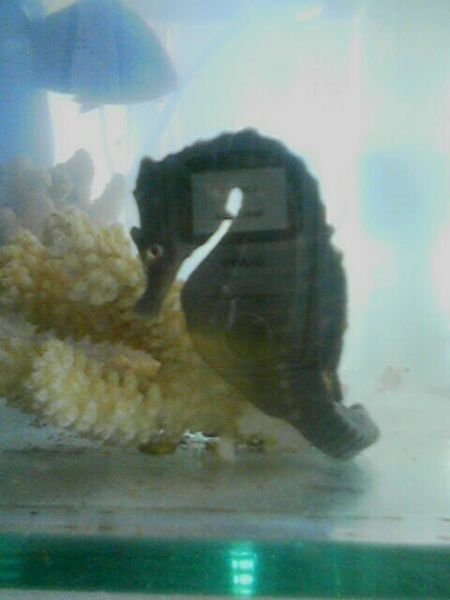 The thought of a freshwater counterpart to the stealthy marine barracuda is just awesome to me. There are several fish called freshwater barracuda, but in the world of cichlids, Rhamphochromis fits the bill. So, I tend to get excited when I hear anything about Rhamphochromis, especially when they arrive in the store. I’ve never kept these fish, but I can see them in my future. Here are some things you may want to know if you’re as intrigued as I am. Read More »
The thought of a freshwater counterpart to the stealthy marine barracuda is just awesome to me. There are several fish called freshwater barracuda, but in the world of cichlids, Rhamphochromis fits the bill. So, I tend to get excited when I hear anything about Rhamphochromis, especially when they arrive in the store. I’ve never kept these fish, but I can see them in my future. Here are some things you may want to know if you’re as intrigued as I am. Read More »
Category Archives: Conservation
Feed SubscriptionMost Unique of the New Fishes Discovered in 2010
Hello, Frank Indiviglio here. Fishes are the world’s most diverse group of vertebrates, with nearly 32,000 species known thus far and new ones being found at the rate of 2 per week. Add to this an unbelievable range of bizarre lifestyles, and it becomes apparent that picking the “most unique” new fish is a difficult task (after all, some male Anglerfishes latch onto females with their teeth and remain fused to their mates for life…tough act to follow!). But the following trio of fishes discovered (or first described) in 2010 is certainly in the running. Read More »
Real Reef – Alternative Live Rock for an Eco-friendly Tank
 Live rock has always been a controversial topic within the aquarium hobby. Rock harvested from oceanic reefs has been a staple for reef enthusiasts for many years. It’s hard to replicate the look of a coral reef in a closed environment without the use of natural live rock. The problem is, it takes a lot longer for the live rock beds to recover than it does for dealers to harvest it. Removing natural rock reduces the amount of locations for new corals to settle and develop, so collection threatens the existing coral reefs as corals have less suitable area to colonize. Read More »
Live rock has always been a controversial topic within the aquarium hobby. Rock harvested from oceanic reefs has been a staple for reef enthusiasts for many years. It’s hard to replicate the look of a coral reef in a closed environment without the use of natural live rock. The problem is, it takes a lot longer for the live rock beds to recover than it does for dealers to harvest it. Removing natural rock reduces the amount of locations for new corals to settle and develop, so collection threatens the existing coral reefs as corals have less suitable area to colonize. Read More »
The Natural History and Captive Care of the Big-Bellied Seahorse
 Hello, Frank Indiviglio here. Seahorse identification is a tricky prospect, as most species can change color, and many even periodically grow and discard fleshy appendages known as cirri. However, the husbandry needs of each species varies, so a proper ID is critical. Fortunately, the Big-Bellied or Pot-Bellied Seahorse (Hippocampus abdominalis) is very distinct in appearance.
Hello, Frank Indiviglio here. Seahorse identification is a tricky prospect, as most species can change color, and many even periodically grow and discard fleshy appendages known as cirri. However, the husbandry needs of each species varies, so a proper ID is critical. Fortunately, the Big-Bellied or Pot-Bellied Seahorse (Hippocampus abdominalis) is very distinct in appearance.
Description
At 12.5 inches in length, the Big-Bellied Seahorse is one of the largest (perhaps the largest) of the world’s 120+ seahorse species. The body is noticeably deeper than that of other seahorses. Males possess a huge brood pouch, which is usually white in color and bordered with yellow at the top. Other distinguishing features are the number of dorsal fin rays (26-29), trunk rings (12-13) and tail rings (45-48), all of which exceed those of most other species. Read More »
Corals in Distress – Mass Bleaching Events
 Many stories have come to light through recent years discussing the plight of coral reefs around the world; overfishing, destructive collecting methods, pollution, and ship traffic damage have taken a serious toll. A number of new studies show that an even greater threat has emerged in 2010, extreme water temperatures.
Many stories have come to light through recent years discussing the plight of coral reefs around the world; overfishing, destructive collecting methods, pollution, and ship traffic damage have taken a serious toll. A number of new studies show that an even greater threat has emerged in 2010, extreme water temperatures.
Earlier this year, the region of Indo-pacific reefs known as the Coral Triangle (a roughly triangular area that encompasses Indonesia, Malaysia, Papua New Guinea, the Philippines, Solomon Islands and Timor-Leste) endured record surface water temperatures. These extreme water temperatures caused a mass coral bleaching event that may prove to be the worst on record. Read More »
 That Fish Blog – Aquarium Advice and Information
That Fish Blog – Aquarium Advice and Information
